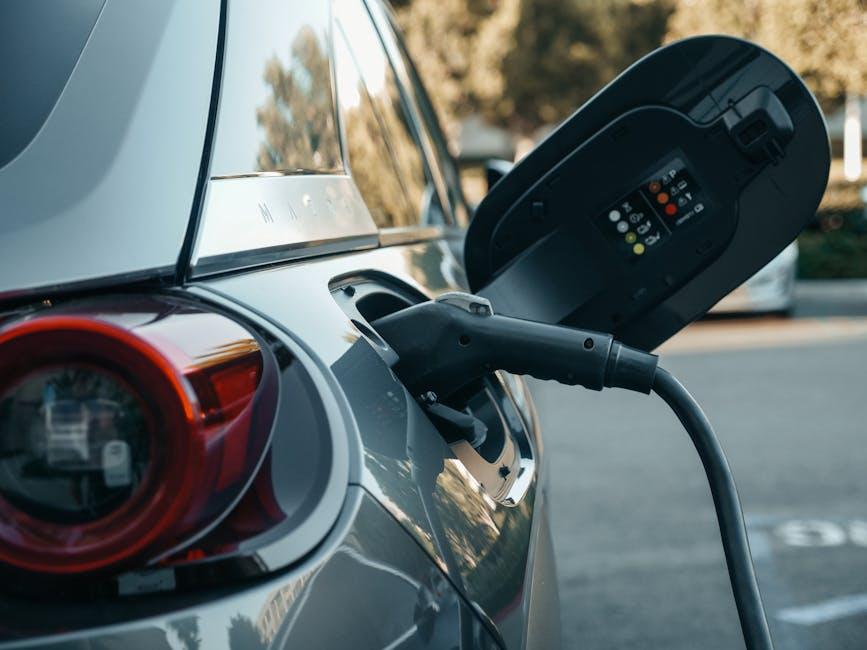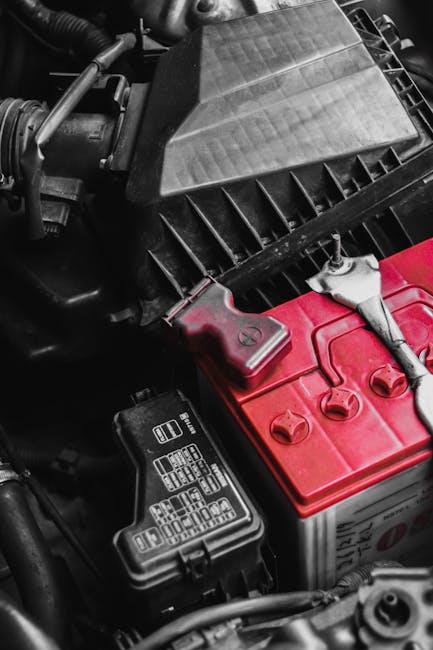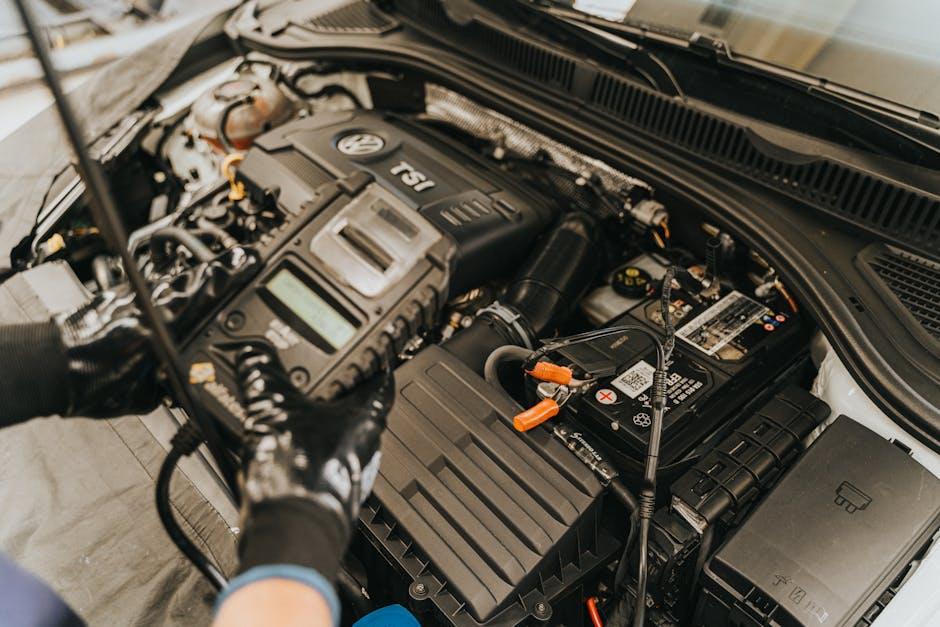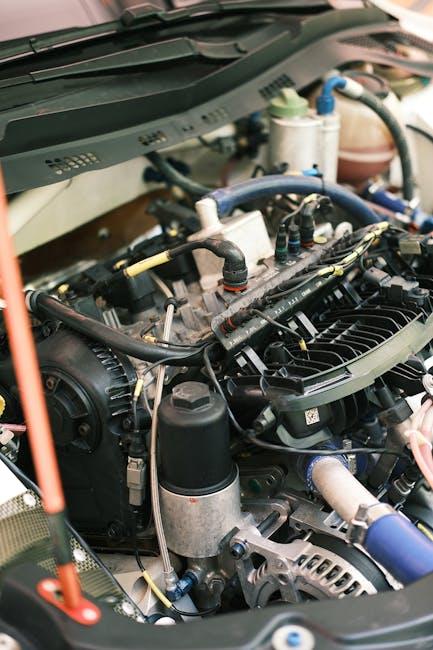A car battery is often an unsung hero, quietly powering your vehicle day in and day out without much thought from its owner—until it suddenly doesn’t. Just like any essential component, a little care goes a long way in extending its life and ensuring reliable starts every time you turn the key. Whether you’re a seasoned driver or a first-time car owner, understanding the best car battery maintenance tips can save you from unexpected breakdowns and costly replacements. In this article, we’ll explore practical, easy-to-follow advice that keeps your battery healthy and your journeys uninterrupted.
Table of Contents
- Choosing the Right Battery for Longevity and Performance
- Essential Cleaning Techniques to Prevent Corrosion
- Smart Charging Habits to Extend Battery Life
- Understanding Temperature Effects on Battery Health
- Regular Testing and Diagnostic Practices
- Safe Handling and Storage Tips for Optimal Maintenance
- Q&A
- To Wrap It Up

Choosing the Right Battery for Longevity and Performance
When selecting a battery, quality matters just as much as compatibility. Opt for brands known for reliability and innovation, as they often incorporate advanced technologies like enhanced calcium alloys or absorbent glass mat (AGM) designs that extend lifespan and improve performance under harsh conditions. Consider the battery’s reserve capacity, which indicates how long it can deliver power in case your alternator fails, and the cold cranking amps (CCA), crucial for reliable startups in low temperatures.
A quick comparison can help you make an informed choice:
| Battery Type | Average Lifespan | Maintenance Level | Performance |
|---|---|---|---|
| Lead-Acid | 3-5 years | Moderate | Standard |
| AGM | 4-7 years | Low | High |
| Gel | 5-7 years | Low | Good in hot climates |
- Match the battery specifications to your vehicle’s requirements.
- Evaluate maintenance needs—sealed batteries reduce upkeep but can cost more upfront.
- Look for warranties as an indicator of manufacturer confidence and value protection.

Essential Cleaning Techniques to Prevent Corrosion
Keeping your battery terminals clean is crucial in preventing the formation of corrosive buildup that can drastically reduce battery efficiency. Begin by disconnecting the battery cables and gently scrubbing the terminals with a mixture of baking soda and water, which neutralizes any acidic residue. Using a soft-bristle brush helps avoid damaging the battery posts. After scrubbing, rinse with clean water and dry thoroughly with a lint-free cloth. For an extra protective layer, apply a thin coat of petroleum jelly or terminal protector spray, which creates a barrier against moisture and air, two key contributors to corrosion.
Additionally, regularly inspecting and cleaning the battery case itself can prevent dirt and grime accumulation that indirectly promotes corrosion. Avoid harsh chemicals that might degrade the plastic housing. Instead, wipe it down with a damp cloth and ensure the battery is securely mounted to minimize vibrations that could loosen connections and expose terminals to corrosive elements. Remember, consistency is vital—adding these simple habits to your car maintenance routine helps extend battery life and ensures reliable engine starts in every season.

Smart Charging Habits to Extend Battery Life
Maximizing your car battery’s lifespan means being mindful about how and when you charge it. Avoiding frequent short trips allows the battery to fully recharge, which reduces wear and tear. Instead of plugging in during every quick stop, opt for longer drives or consider a smart charger that monitors and adjusts the charging rate automatically. This intelligent approach prevents overcharging, which can lead to overheating and degrade battery components over time.
Maintaining optimal charge levels also plays a crucial role. Batteries fare best when kept between 20% and 80% charge—either letting them drain too low or charging them to 100% constantly can shorten their lifespan. Below is a simple guide to ideal charging practices:
| Charging Situation | Recommended Action | Why It Helps |
|---|---|---|
| Battery below 20% | Charge promptly to 80% | Prevents deep discharge damage |
| Battery around 50% | Partial charges, avoid full charge | Reduces stress on battery cells |
| Battery above 80% | Avoid unnecessary charging | Prevents overcharging and heat buildup |

Understanding Temperature Effects on Battery Health
Temperature plays a crucial role in determining a battery’s longevity and performance. Extreme cold can drastically reduce a battery’s ability to deliver power, making it harder for your car to start on chilly mornings. On the other hand, excessive heat accelerates chemical reactions inside the battery, causing it to deteriorate faster. Both conditions impose stress, but understanding their effects allows you to take proactive measures to shield your battery. For instance, parking your vehicle in a garage during harsh weather or using thermal battery wraps can help moderate temperature fluctuations.
Here’s a quick overview of how different temperatures impact battery health:
| Temperature Range | Effect on Battery | Maintenance Tip |
|---|---|---|
| Below 32°F (0°C) | Reduced starting power Slower chemical reactions |
Keep battery warm and fully charged |
| 32°F to 80°F (0°C to 27°C) | Optimal operating range Balanced chemical activity |
Regular checks and keep terminals clean |
| Above 80°F (27°C) | Accelerated aging Potential electrolyte evaporation |
Use heat shields or shade when possible |
- Cold Weather slows battery performance and reduces cranking power.
- Hot Weather speeds up internal corrosion and electrolyte loss.
- Moderate Temperatures provide the best environment for battery longevity.

Regular Testing and Diagnostic Practices
Consistently evaluating your car battery’s health is key to avoiding unexpected breakdowns. Periodic testing with a voltmeter or a multimeter can provide instant insights into your battery’s charge status. When conducting these checks, aim to measure the voltage after the engine has been off for at least an hour. A healthy, fully charged battery typically shows around 12.6 volts or more. Additionally, consider using specialized battery testers at your local service stations or auto shops; these devices gauge the battery’s ability to hold charge under load, revealing potential weaknesses before they become critical.
Incorporate diagnostic practices into your maintenance routine by noting any symptoms that might hint at battery problems, such as dimming headlights, slow engine crank, or unusual corrosion patterns on the terminals. Below is a simple diagnostic checklist to keep handy during your inspections:
- Voltage level: Should be ≥ 12.6 V when idle
- Terminal condition: Free from corrosion or buildup
- Physical integrity: No swelling or cracks on battery casing
- Battery age: Typically less than 4-5 years for optimal performance
| Symptom | Potential Cause | Recommended Action |
|---|---|---|
| Slow engine start | Low battery charge | Charge or replace battery |
| Corroded terminals | Acid leakage | Clean terminals and inspect for damage |
| Dimming lights | Weak battery or alternator issues | Test battery & alternator |

Safe Handling and Storage Tips for Optimal Maintenance
To maximize your car battery’s lifespan, always ensure it’s stored in a cool, dry place away from direct sunlight or extreme temperatures. Excessive heat can accelerate battery wear, while freezing conditions might cause electrolyte fluids to freeze, leading to cracks or leaks. When handling your battery, wear protective gloves and eyewear to avoid acid burns or injuries from accidental sparks. Keep the battery terminals clean and free from corrosion by applying a thin layer of petroleum jelly or lithium grease, which helps maintain optimal connectivity.
Proper storage also involves keeping the battery upright to prevent acid spillage and regularly checking its voltage with a multimeter if the vehicle is unused for extended periods. Disconnect the battery if the vehicle will be idle for weeks to avoid gradual discharge. Consider the following quick checklist for safe and effective battery care:
- Store upright in a well-ventilated area
- Avoid extreme temperature fluctuations
- Wear safety gear when handling
- Keep terminals clean and protected
- Disconnect battery if vehicle is idle long-term
| Condition | Ideal Storage Temp | Risk if Improper |
|---|---|---|
| Hot Climate | 20-25°C (68-77°F) | Reduced lifespan |
| Cold Climate | 5-10°C (41-50°F) | Electrolyte freezing |
| Humidity | Low | Corrosion risk |
Q&A
Q&A: Best Car Battery Maintenance Tips
Q1: Why is regular car battery maintenance important?
A1: Your car battery is the heart of your vehicle’s electrical system. Regular maintenance ensures reliable starts, prolongs battery life, and prevents unexpected breakdowns, especially in extreme weather conditions.
Q2: How often should I check my car battery?
A2: Ideally, inspect your battery at least twice a year — before winter and summer. These seasonal checks can catch early signs of corrosion, leakage, or diminished charge capacity.
Q3: What are the key signs that my car battery needs attention?
A3: Slow engine crank, dim headlights, frequent jump-starts, and the battery case swelling or leaking are red flags that maintenance or replacement is needed.
Q4: Can I clean my car battery myself?
A4: Yes, with proper precautions. Wear gloves and eye protection. Clean corrosion around terminals with a mixture of baking soda and water using a brush. Always disconnect the negative terminal first and reconnect it last.
Q5: How can I prevent corrosion on battery terminals?
A5: Applying a thin layer of petroleum jelly or specialized terminal protectors after cleaning helps repel moisture and prevent corrosion buildup.
Q6: Does charging the battery regularly help?
A6: Absolutely. If you frequently drive short distances or leave your car unused for long periods, using a trickle charger or battery maintainer keeps the battery topped off and healthy.
Q7: What role does temperature play in battery health?
A7: Extreme cold reduces battery capacity and cranking power, while excessive heat accelerates fluid evaporation and internal corrosion. Parking in a garage or shaded area can mitigate these effects.
Q8: Is it necessary to replace a car battery at a certain age?
A8: Generally, car batteries last about 3-5 years. However, factors like driving habits and climate can shorten or extend this lifespan. Regular testing is the best way to decide when replacement is due.
Q9: Can a poorly maintained battery affect other car components?
A9: Yes, a weak battery can strain the alternator and affect electronic systems, potentially leading to costly repairs beyond just replacing the battery.
Q10: What’s the best overall advice for car battery longevity?
A10: Stay proactive—inspect regularly, keep terminals clean, avoid deep discharges, and park in moderate temperatures when possible. A little care goes a long way toward a strong, dependable battery.
To Wrap It Up
In the journey of keeping your car running smoothly, your battery often plays the unsung hero. By embracing these simple yet effective maintenance tips, you not only extend the life of your battery but also ensure that your vehicle is ready to go whenever you are. After all, a well-cared-for battery is the spark that keeps your adventures alive—steady, reliable, and ready to power every mile ahead. Drive smart, maintain wisely, and let your battery’s strength be the silent partner in every journey.


5 Comments
lk9de7
lk9de7
2hn6w1
b7r5w8
5xm9o5